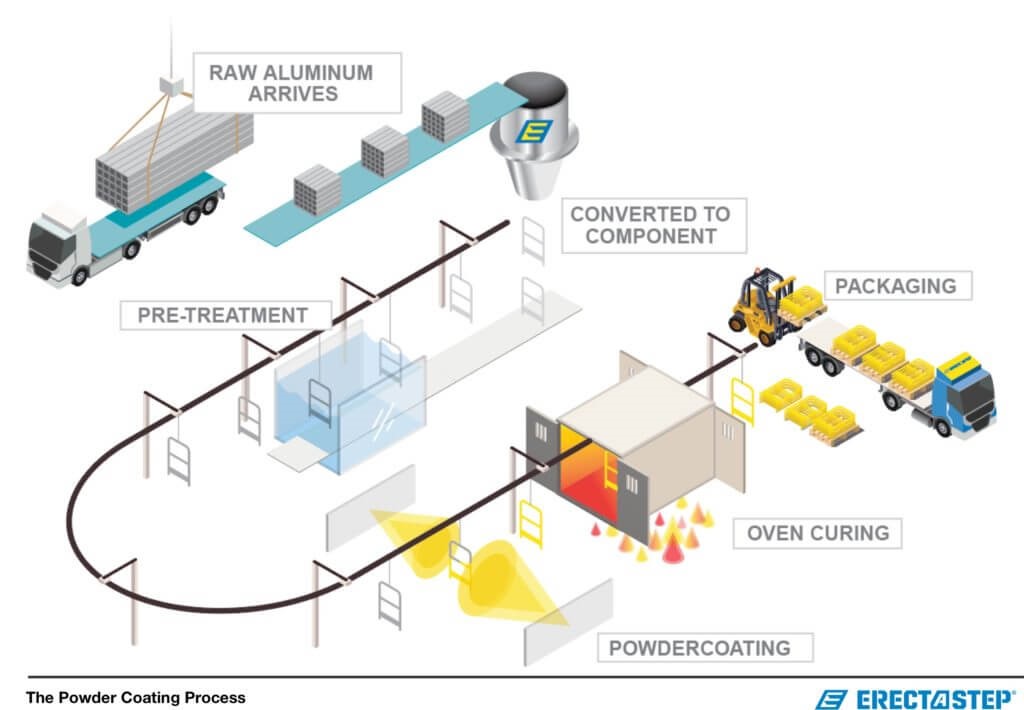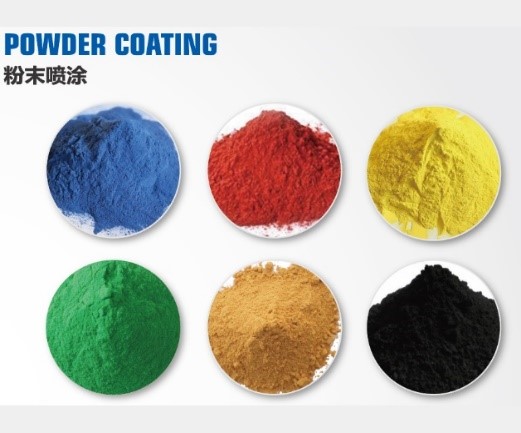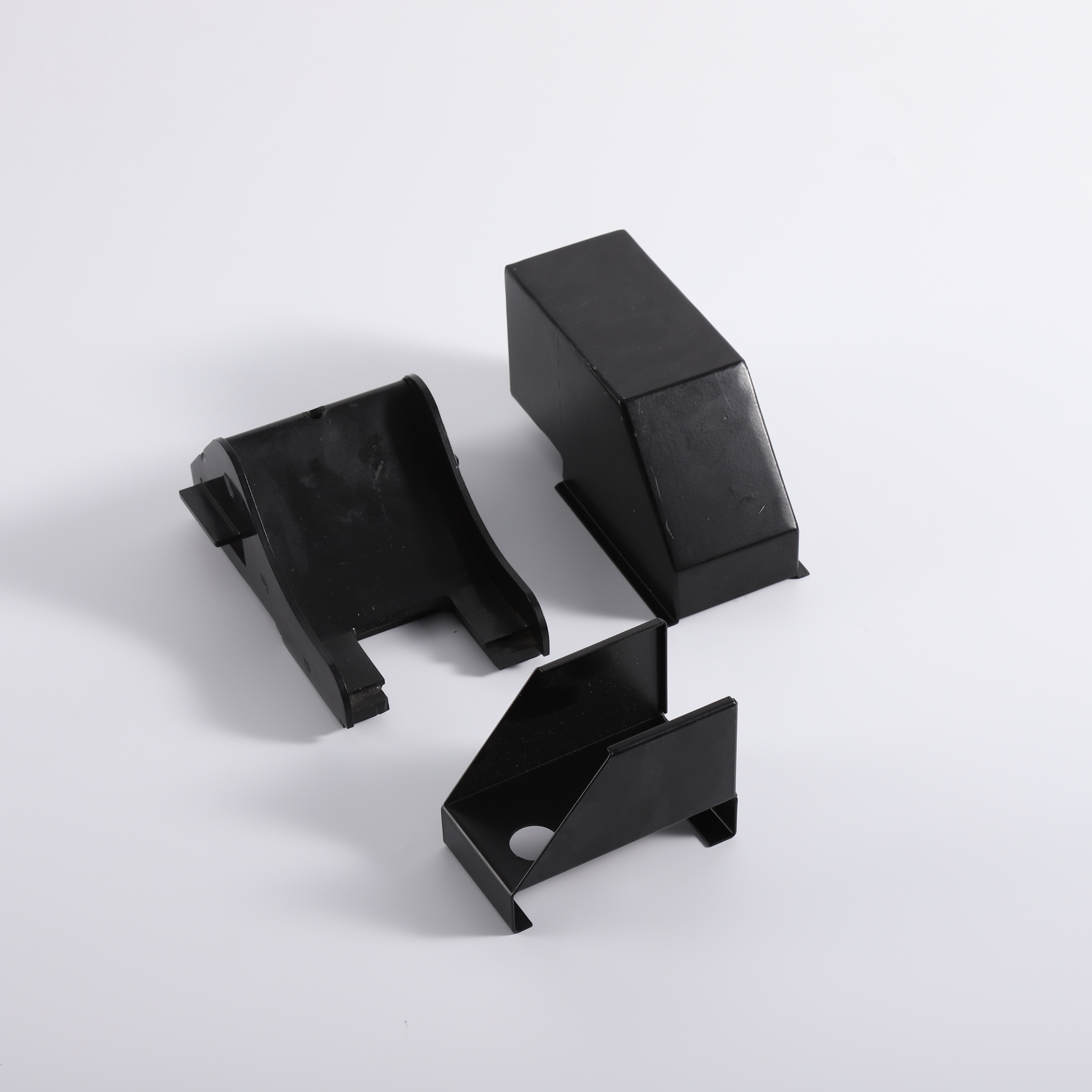Powder coating is a dry finishing process that has become extremely popular. Powder coating is used on a wide array of products. More and more companies specify powder coatings for a high-quality, durable finish, allowing for maximized production, improved efficiencies, and simplified environmental compliance. Used as functional (protective) and decorative finishes, powder coatings are available in an almost limitless range of colors and textures, and technological advancements have resulted in excellent performance properties.
Advantages over other coating processes
1. Environment friendly. Powder coatings contain no solvents and release little or no amount of volatile organic compounds (VOC) into the atmosphere.
2. More thicker coatings without running or sagging than conventional liquid coatings.
3. Perfect color consistency. Powder coated items generally have fewer appearance differences than liquid coated items between horizontally coated surfaces and vertically coated surfaces.
4. A wide range of speciality effects are easily accomplished using powder coatings that would be impossible to achieve with other coating processes.
5. Curing time is significantly faster with powder coatings compared to liquid coatings especially when using ultraviolet cured powder coatings or advanced low bake thermosetting powders.
Powder Coating Process
The Powder coating process involves three basic steps: raw material preparation or the pre-treatment, the powder coating application and curing.
Powder Coating Substrate Considerations
Before applying the powder coating material, you must first consider the substrate material that you will be coating. It is very important to have a clear understanding of the true composition of the surface of the part.
ALUMINUM:
ALUMINUM CASTING
COLD/HOT ROLLED STEEL
CAST IRON
BRASS
COPPER
ZINC
STAINLESS STEEL
Powder Coating Properties:
Coating Properties
Mechanical Properties
Pencil hardness GB/T 6739-1996 H-2H
Adhesion (cross-cut method) GB/T 9286-1998 Grade 0
Bending test GB/T 6742-1986 ≤ 2mm
Impact test GB/T 1732-1993 ≥50kg.cm
Cupping test GB/T 9753-1988 ≥7mm
Corrosion Resistance
Salt spray test GB/T 1771-1991 >500 hours,
no change, crossion width at crossing ≤ 2mm
Damp heat test GB/T 1740-1979 >1000 hours,
mild loss of gloss
Temperature resistance 100°C/48 hours, excellent gloss retention
Powder Coating Colours
RALAL Range, Pantone Range, and other Natural Colour Systems (NCS)
If you have a Powder Coating Colour requirement that we do not stock we are usually able to source powders from the above ranges within 48 hours.
Powder Coating Gloss Level
Gloss is measured as a percentage.
1. Matt Powders are between 20% and 30% gloss.
2. Semi-gloss Powders are usually around 60-65% gloss.
3. Gloss Powders at least 80% and can be 85%.
Powder Coating finishes
1. Textured Powder Coating:
2. Ripple/Leatherette Powder Coating.
3. Hammerite Finish Powder Coating.
4. High Temperature Powder Coating.
5. Anti-Bacterial Powder Coating.
6. Clear or Tinted Powder Coatings.
Application Field
1. In automotive applications:
a) some primers used on bodywork have converted to powder. This has given improved coating quality and provided ecological advantages.
b) where a functional as well as a decorative finish is desirable powder coatings are being used increasingly eg.
i. - wheels,
ii. - bumper bars,
iii. - mirror frames,
iv. - oil filters,
v. - battery trays,
vi. - coil springs and
vii. - heads.
2. Appliances
a) Specially formulated, hard and scratch resistant powder coatings are replacing the energy-intensive porcelain finishes on washer tops and lids.
b) Powder coatings are being used on range housings, freezer cabinets, drier drums, and microwave oven cavities.
c) Outdoor furniture, farm and garden implements and garden tractors also are being finished with powder coating materials. - Interior fluorescent light reflectors are coated using a highly reflective, very thin powder coating.
d) Exterior lamp housings on highway and parking deck fixtures are coated with specially formulated powder which give ultra violet light protection and added corrosion protection
Powder Coating,Custom Powder Coating,Metal Powder Coating,Powder Coating Services Suzhou FCE precision electronics Co., LTD , http://www.fcesz.com
Product inspections are conducted in principle at inspection agencies. For products that need to be inspected on site, the inspection agency should carry out on-site inspections in accordance with relevant regulations.
For the first time to apply for inspections and change inspections, sampling and inspection methods shall be adopted in principle. The National Center of Anpox issued an inspection notice to the applicant and issued an inspection authorization letter to the inspection agency that commissioned the inspection. In principle, the applicant should send (send) samples to the inspection agency within 15 days from the date of receipt of the inspection notice.
Continuation inspection, supervision and inspection use sampling inspection. The national center of Anpox issued a sampling power of attorney to the sampling personnel and issued a power of attorney to the inspection agency that commissioned the inspection.
Sampling samples are in principle extracted from the finished product database of the holder of the safety mark (hereinafter referred to as the “certificateâ€). If necessary, they can also be taken from the end of the production line, the sales outlets of the licensee, and the product user warehouse.
When sampling the product, the sampling personnel shall seal the sample in strict accordance with the prescribed sampling rules, base number, and quantity. The sampling base may not be required at the end of the production line, at the sales outlet of the licensee, or at the customer warehouse of the product.
If the applicant fails to send (send) the sample on time or apply for the continuation of the safety mark due to special reasons, the applicant (certificate) shall promptly submit an application for extension to the National Security Center of the In principle, the time must not exceed 6 months.
If a large-scale equipment continues its safety sign and does not meet the conditions for the inspection of the safety sign, it may continue the safety sign and make additional inspections when the inspection requirements are met; if the continuation of the safety sign remains unsatisfied for a full year, the relevant product safety sign shall be suspended.
For the products that must be supervised and inspected according to the supervision and inspection plan, if the certificate holder fails to meet the sampling requirements of the safety mark, the relevant conditions shall be provided within the next 90 days. If the overdue period is still not met, the related product safety signs will be suspended.
The certificate holder shall send (send) the sample of the sealed sample to the inspection agency that accepts the entrustment within 7 days from the date of sampling.
The inspection agency shall strictly carry out the inspection work in accordance with the relevant provisions of the inspection and inspection of safety production and the requirements of the inspection power of attorney. It shall not arbitrarily change the inspection basis, adjust the type of inspection, increase or decrease the inspection item, or change the inspection method. The inspection work should first check the consistency of the sample and the review and filing technical documents.
During the supervision and inspection process, the product structure and technical parameters must not be changed or adjusted.
The time limit for the inspection agency to complete the inspection work is determined based on the complexity of the product, and in principle it shall not exceed 45 working days from the date of receipt of the sample.
If the product that bids for the continuation of the safety sign is within one year before the expiry of the validity period of its safety sign, if the supervision inspection or change inspection is carried out and the relevant requirements of the continuation inspection are satisfied, the test results may be used as a basis for the continuation of the safety sign.
Qingdao Zhongbang Instrument Co., Ltd. from Qingdao Zhongbang Instrument Co., Ltd. Technical Department



Roller safety test inspection
The safety of the idler roller is tested by various testing equipments, including: roller rotation resistance test, roller soaking sealing test, idler axial load test, roller radial runout test.